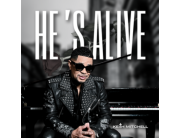LGBT students routinely experience harassment in their schools however, GSAs and other support clubs have been found to provide social support for LGBT students.
Students have reported hearing homophobic remarks from both students and instructors in their schools. In addition, the more harassment students reported, the more likely the student also reported higher levels of depression and lower self-esteem. However, LGBT students attending a school with an active support club reported hearing fewer homophobic expressions and experiencing less victimization than LGBT students attending a school without a GSA or support club. In addition, LGBT students with a GSA in their high school reported more positive outcomes when it came to high school belonging and school victimization.
In addition to the mere presence of a GSA on campus, the level of participation in a GSA has also been linked to the amount of social support reported by LGBT students. A 2011 study by Toomey, Ryan, Diaz, and Russell (2011) found that the presence of a GSA, participation in a GSA, and perceived effectiveness of a GSA were each individually associated with youth’s well-being. In certain cases, research showed these three factors protected youth’s well-being against victimization. Furthermore, youths who participated in a GSA reported lower levels of depression and higher self-esteem.
GSAs are important not only at the individual level but also to promote the education of LGBT issues to school populations. GSAs have been found to promote social activism. Researchers have argued that GSAs are a grassroots student-initiated form of activism. The same researchers claimed that GSAs are important to challenge the status quo, confronting discrimination, and reconceptualize gender. LGBT youths in schools across the US are subject to serious obstacles that may impact their ability to perform in school.
A 2011 study found that two-thirds of LGBT students reported feeling unsafe at school. Some students felt so unsafe that they reported missing school due to safety concerns. The same study found that the GPA of LGBT children was, on average, half a grade lower than straight. This may be an indicator that LGBT youth face different barriers to education than straight youth.
LGBT youth’s school experience may impact their life decisions. LGBT youth in high school were less likely to report that they wanted to pursue further education than straight youth. These findings suggest that LGBT youths’ negative experiences in primary education relate to their decision not to continue on in the education system. This then robs LGBT youth of all of the opportunities that advanced education offers. However, an active GSA on a high school campus has been associated with better academic outcomes for LGBT students.
LGBT youth attending schools with an active GSA were less likely to report feeling unsafe at school and were less likely to miss school due to a threat to their safety.
Photo by Susan Q Yin on Unsplash







Add Comment
You must be logged in to post a comment.